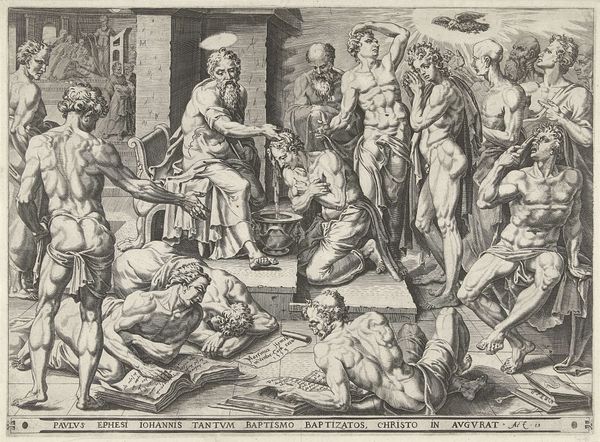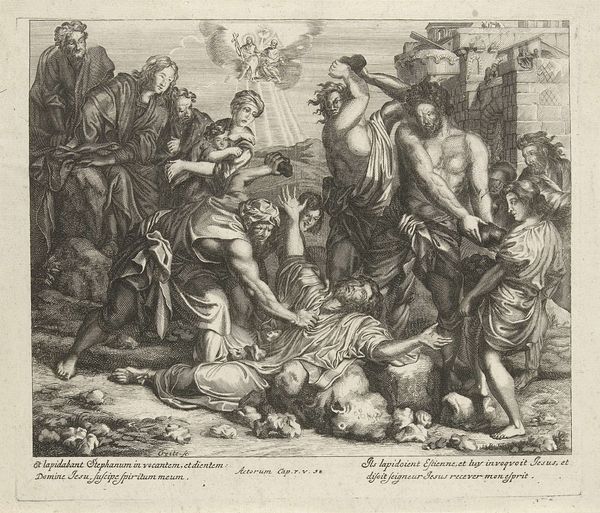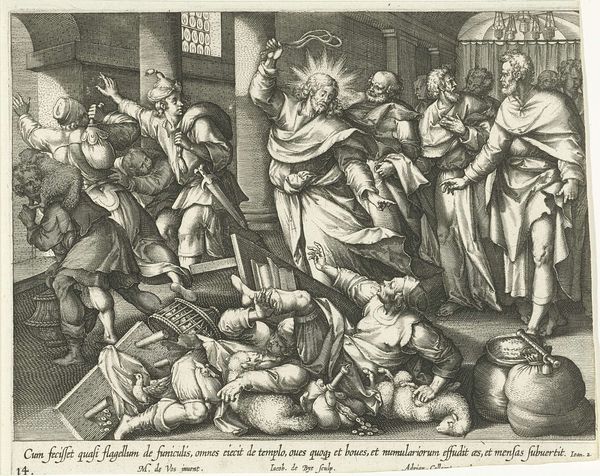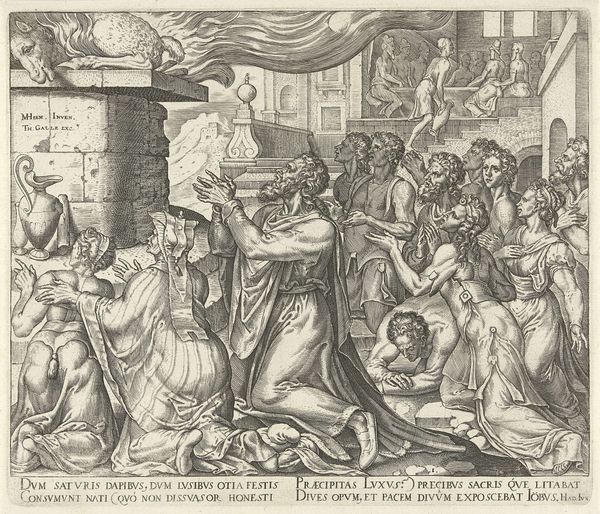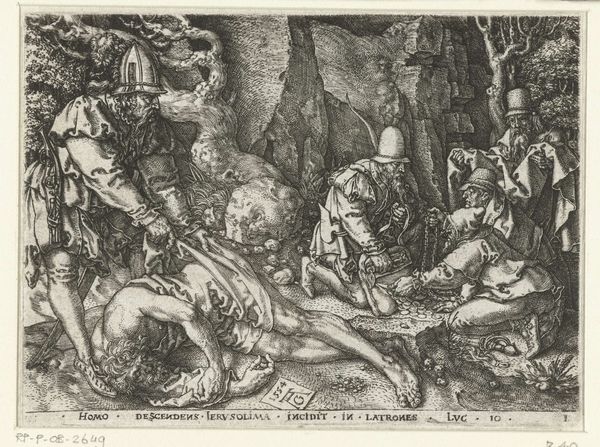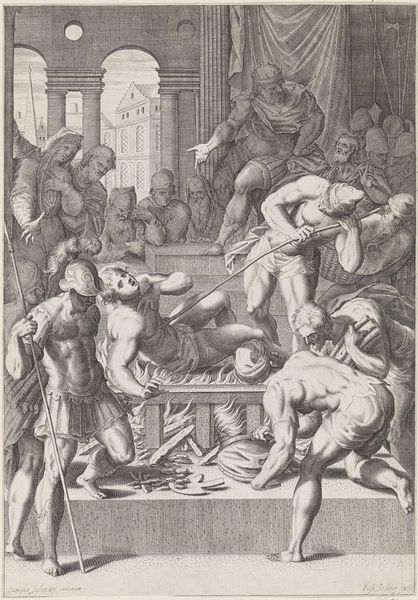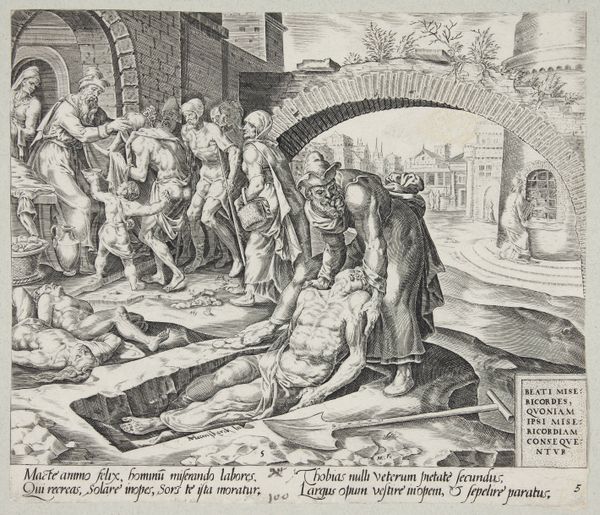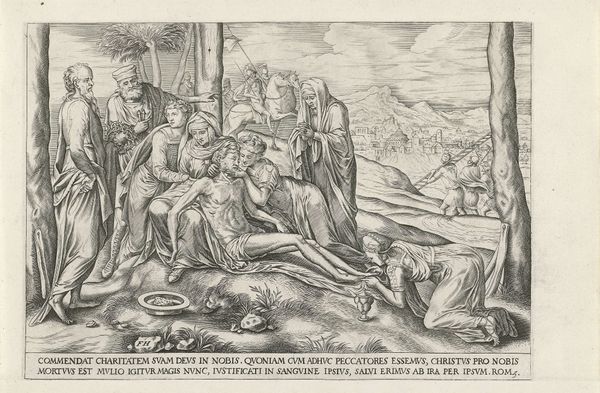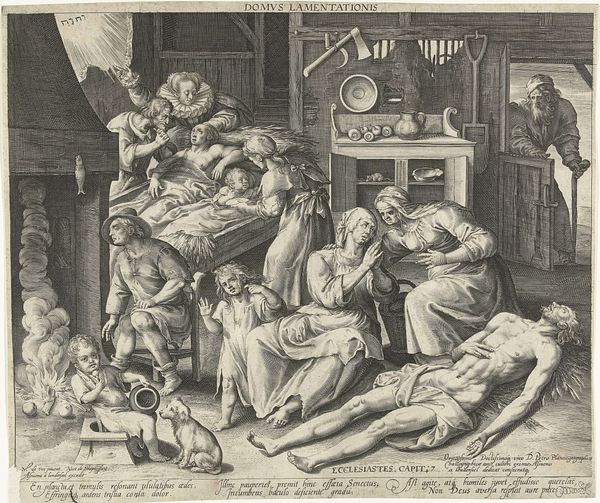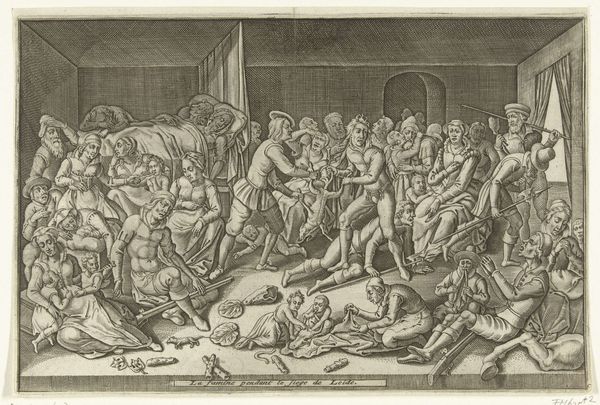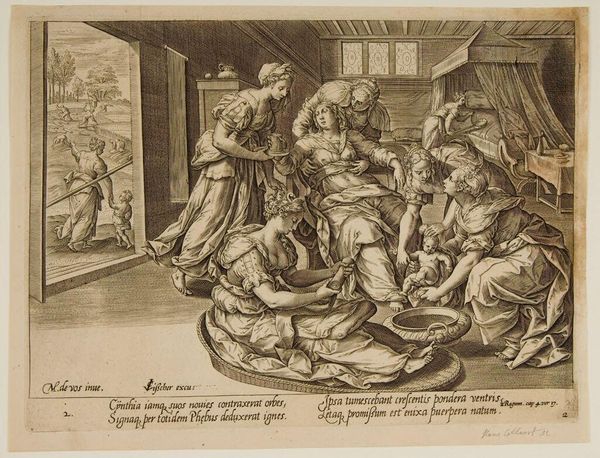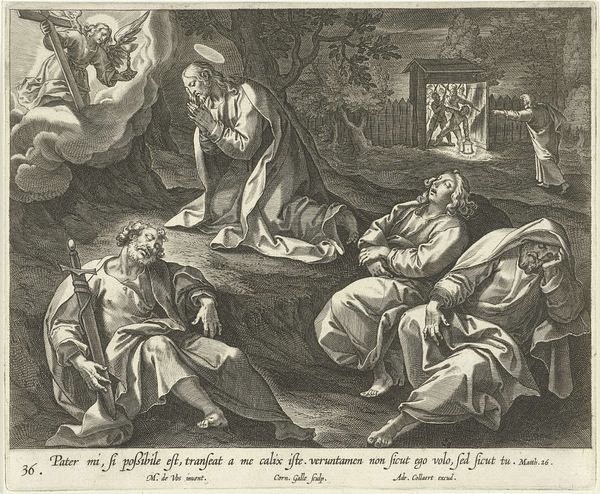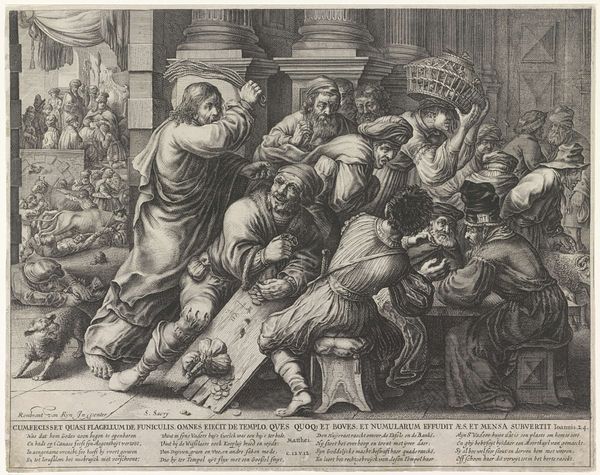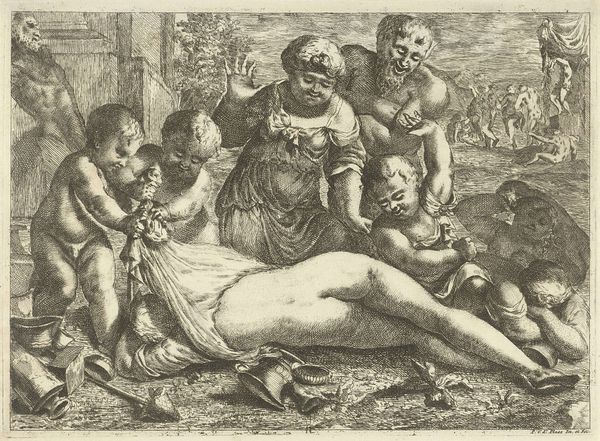
print, engraving
#
narrative-art
#
baroque
# print
#
old engraving style
#
figuration
#
genre-painting
#
history-painting
#
engraving
Dimensions: height 210 mm, width 265 mm
Copyright: Rijks Museum: Open Domain
Editor: Here we have "The Adoration of the Shepherds," an engraving by Johann Sadeler I, dating sometime between 1599 and 1666. It has this deeply reverent mood. The dark lines create a strong contrast. How do you interpret this work, considering the historical context? Curator: It’s fascinating to view this through the lens of its time. This print emerges in the wake of the Reformation and Counter-Reformation. How do you think that religious upheaval shaped artistic choices, particularly the portrayal of figures and the narrative? Editor: Well, I see the shepherds, they're humble and reverent, maybe relatable to the common person, emphasizing direct access to faith instead of hierarchical religious structures? Curator: Exactly. Sadeler's "Adoration" isn't just a religious scene; it's a socio-political statement. The shepherds, representing the marginalized, are central. Do you notice anything about the space they occupy in relation to the holy family? Editor: They seem to be given the same importance, maybe even more, filling up much of the composition. It’s almost… populist. Curator: Precisely! This challenges the elite's exclusive access to the divine. This work becomes a powerful articulation of faith, accessible and belonging to everyone. And the animals, in a more radical reading, suggest humans aren't as cognitively advanced as they suppose. Editor: I hadn't considered that perspective before, of art as a tool for shifting social dynamics. Thank you. Curator: And thank you. It’s through these dialogues that we can unearth the multi-layered meanings within a work like this.
Comments
No comments
Be the first to comment and join the conversation on the ultimate creative platform.
